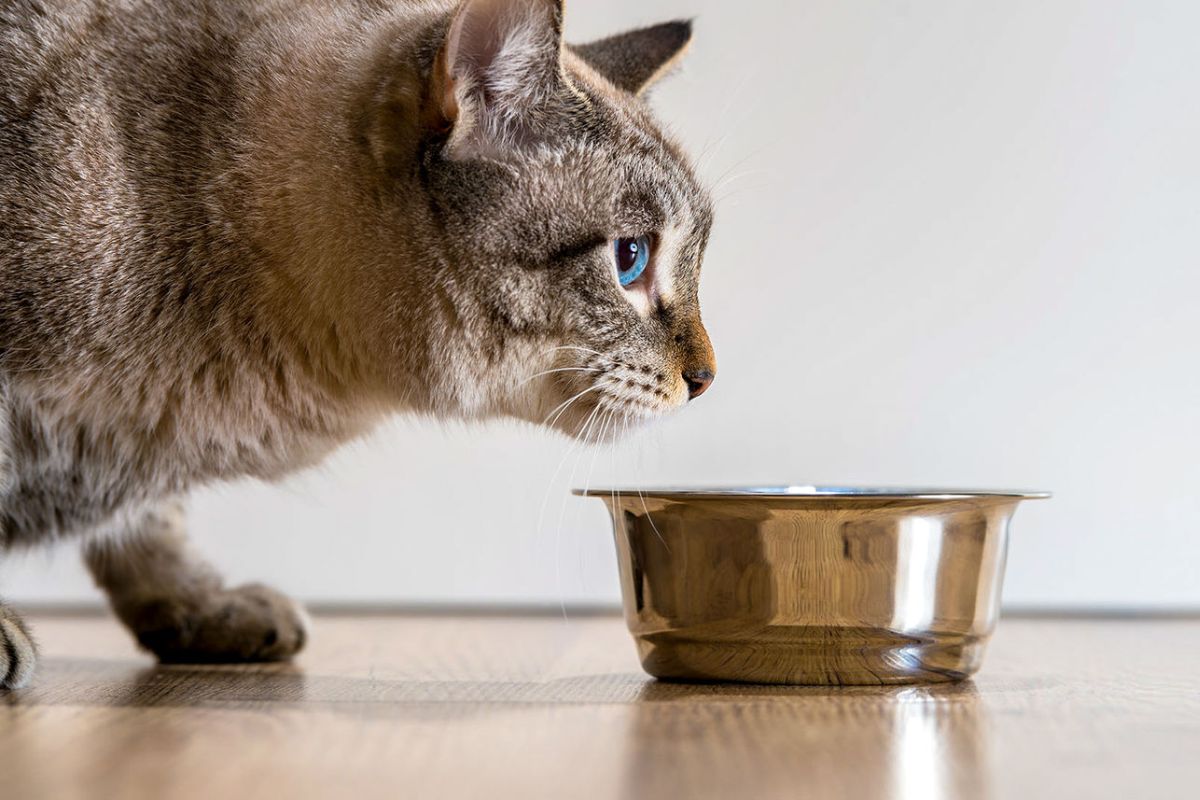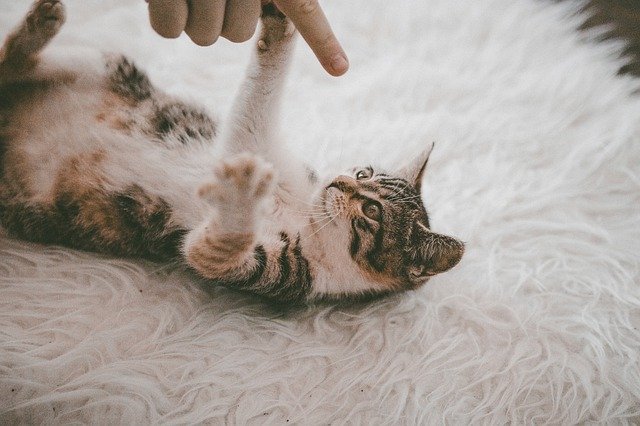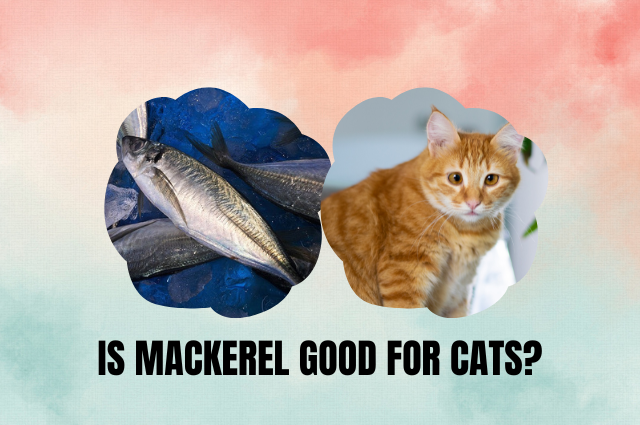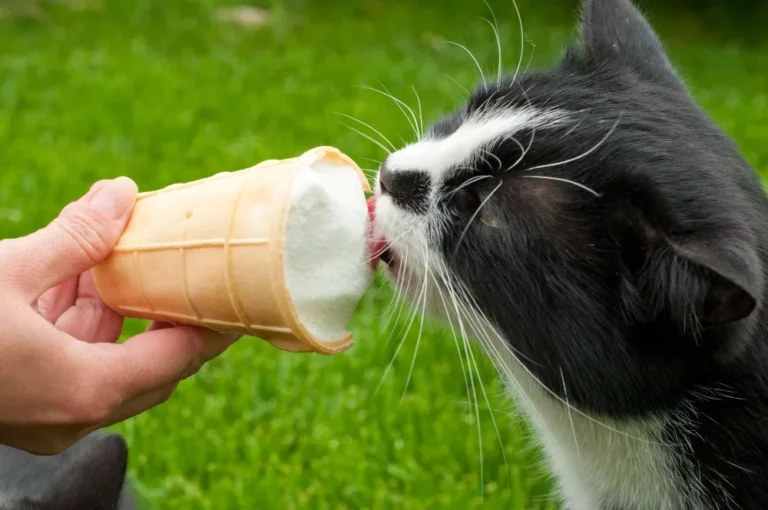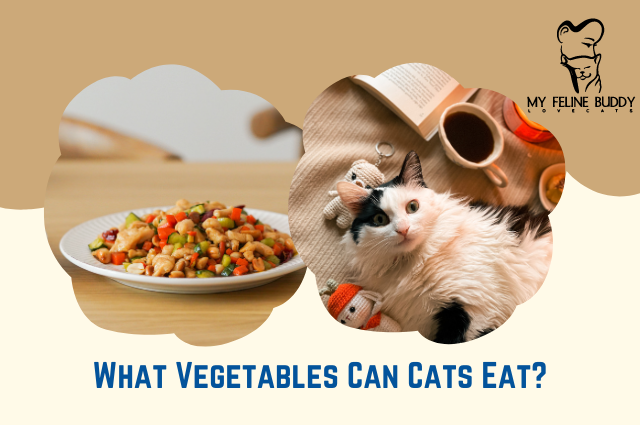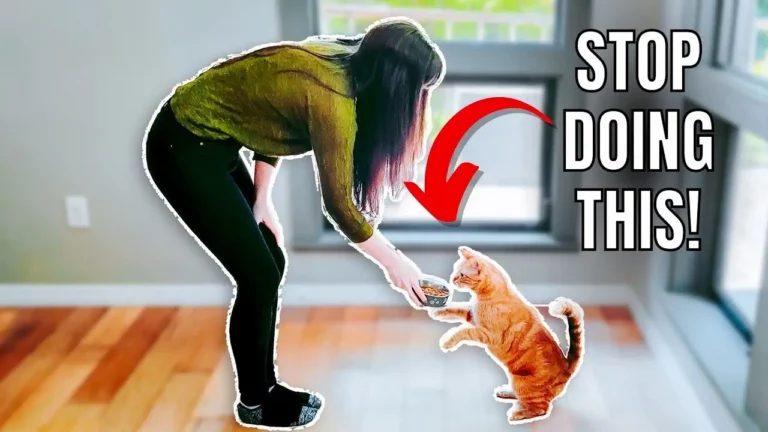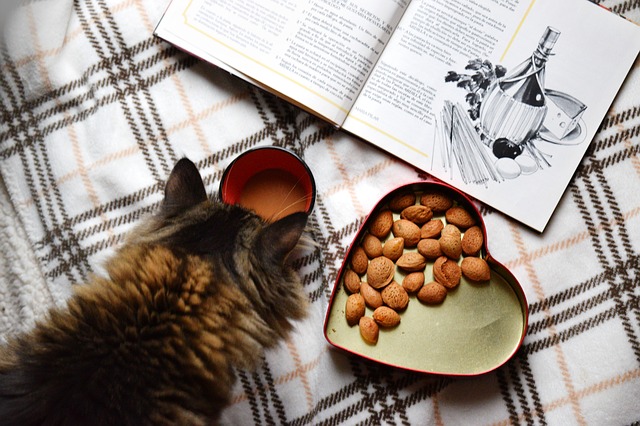Wet Food for Overweight Cats – Definitive Guide
Weight management is essential for feline health, as obesity can lead to serious health issues like diabetes, arthritis, and heart disease. Maintaining a healthy weight helps improve a
Wet food, in particular, can be beneficial due to its lower caloric density compared to dry food. Understanding the nutritional needs and dietary preferences of overweight cats is crucial for effective weight management.
Common Causes of Obesity in Cats
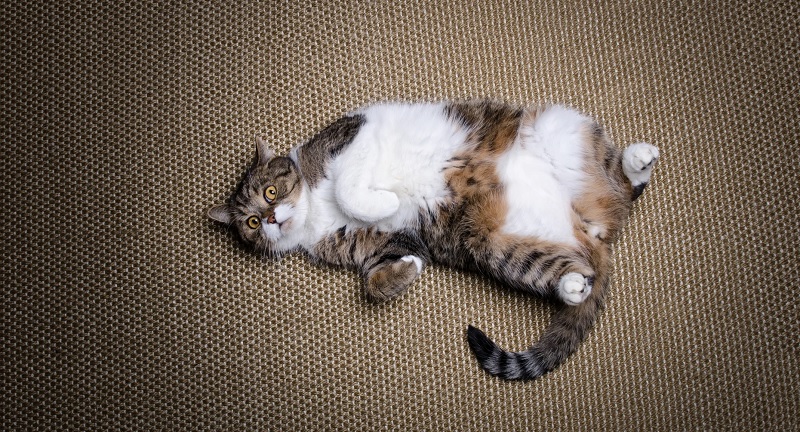
Understanding the common causes of obesity in cats is the first step toward effective weight management. Factors such as overfeeding, lack of physical activity, high-calorie diets, and age-related metabolic changes all contribute to feline obesity.
By identifying these issues, pet owners can take proactive measures to ensure their cats maintain a healthy weight.
Overfeeding and Portion Control Issues
Overfeeding is one of the primary contributors to feline obesity. Many
Portion control is essential; using measuring cups or pre-packaged servings can help ensure that cats receive the appropriate amount of food for their size and activity level. Additionally, educating pet owners about calorie content and feeding guidelines can promote healthier feeding habits.
Lack of Physical Activity
Cats are natural hunters, but many indoor cats lack sufficient physical activity due to limited space or stimulation. A sedentary lifestyle contributes significantly to weight gain. Encouraging regular playtime can help combat obesity; interactive toys, laser pointers, and climbing structures can motivate cats to move more.
Establishing a routine that includes multiple play sessions each day not only aids weight management but also enhances mental stimulation and overall well-being.
High-Calorie Diets and Nutritional Imbalance
The nutritional composition of a
Many commercial
Age and Metabolism Changes
As cats age, their metabolism tends to slow down, making them more susceptible to weight gain. Older cats may also become less active due to arthritis or other health issues. This change necessitates adjustments in their diet and feeding regimen.
A veterinarian can provide guidance on how to modify portion sizes and select appropriate food formulations that cater to an older
Wet Food vs. Dry Food for Weight Management
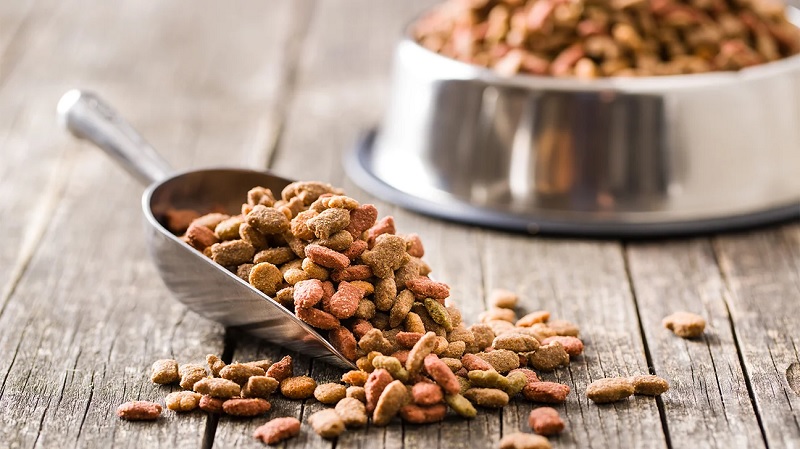
When considering dietary options for overweight cats, it’s important to compare wet food with dry food regarding their effectiveness in weight management. Wet food generally offers lower caloric density and additional hydration benefits compared to dry food, making it an excellent choice for helping cats achieve or maintain a healthy weight.
Caloric Density
One significant difference between wet and dry
This lower caloric density allows cats to consume larger portions without exceeding their daily caloric intake, promoting satiety while aiding in weight loss efforts.
For overweight cats, wet food can be an effective strategy for managing their diet while ensuring they feel full.
Benefits of Wet Food for Weight Loss
Wet food offers several advantages for overweight cats seeking weight loss. Its high moisture content not only aids hydration but also contributes to a feeling of fullness after meals.
Additionally, many wet foods are formulated with higher protein levels relative to carbohydrates, aligning with the dietary needs of obligate carnivores like cats. This protein-rich diet helps maintain muscle mass during weight loss while promoting fat reduction.
Hydration Benefits of Wet Food
Hydration is crucial for overall feline health, particularly in preventing urinary tract issues. Wet food contributes significantly to a
This hydration support is particularly beneficial for overweight cats who may be at risk for dehydration-related health problems. Ensuring adequate hydration helps maintain kidney function and promotes overall well-being.
How to Choose the Right Wet Food for Overweight Cats
Selecting the right wet food is critical for effectively managing an overweight
Check Food Labels
When selecting wet food for overweight cats, understanding food labels is vital. Look for products labeled as “low-calorie” or “weight management.” Check the ingredient list for high-quality protein sources at the top, such as chicken or turkey, while avoiding fillers like corn or wheat that contribute unnecessary calories without nutritional value.
Low-Calorie Wet Food Options
Many brands offer low-calorie wet food specifically formulated for weight management in cats. These options typically contain fewer calories per serving while still providing essential nutrients. Selecting these specialized formulations ensures that your
High-Protein, Low-Carb Formulations
Choosing wet foods that are high in protein and low in carbohydrates is essential for overweight cats. Cats thrive on diets rich in animal protein; thus, selecting foods with at least 30% protein content can help support muscle maintenance during weight loss while minimizing fat accumulation.
Avoiding High-Fat Ingredients
When selecting wet food for overweight cats, it’s crucial to avoid products with high-fat ingredients such as animal by-products or excessive oils. These ingredients contribute unnecessary calories that can hinder weight loss efforts. Opting for lean meat sources ensures that your
The Importance of Fiber in Weight Management
Fiber plays an essential role in managing a
Nutritional Ingredients to Prioritize in Wet Food
Identifying key nutritional ingredients when selecting wet food can significantly impact an overweight
Lean Protein Sources (Chicken, Turkey, Fish)
Prioritizing lean protein sources like chicken, turkey, or fish is crucial when selecting wet food for overweight cats. These ingredients provide essential amino acids necessary for muscle maintenance while helping your
Omega-3 and Omega-6 Fatty Acids
Incorporating omega-3 and omega-6 fatty acids into your
Essential Vitamins and Minerals
A balanced wet food should contain essential vitamins and minerals that support overall health in overweight cats. Ingredients like taurine are vital for heart health, while vitamins A and E contribute to immune function and skin integrity.
L-Carnitine for Fat Burning
L-Carnitine is an amino acid that aids in fat metabolism by converting stored fat into energy. Including this ingredient in wet food formulations can enhance fat burning during weight loss efforts while preserving lean muscle mass.
Added Moisture to Support Hydration
The moisture content found in wet food not only aids hydration but also promotes urinary tract health by diluting urine concentration. This benefit is particularly important for overweight cats who may be prone to urinary issues due to dehydration.
Ingredients to Avoid in Wet Food for Overweight Cats
Being aware of harmful ingredients when selecting wet food will help ensure that your overweight
High Carbohydrate Fillers (Corn, Wheat, Soy)
Avoiding high carbohydrate fillers such as corn, wheat, and soy is crucial when selecting wet food for overweight cats. These ingredients contribute empty calories without providing essential nutrients necessary for maintaining a healthy weight.
Artificial Preservatives, Colors, and Flavors
Wet foods containing artificial preservatives, colors, or flavors should be avoided as they may negatively impact your
Excessive Sodium or Sugars
High sodium levels can lead to hypertension in cats while excessive sugars contribute to obesity-related complications such as diabetes. Selecting low-sodium options free from added sugars promotes better long-term health outcomes.
By-products and Low-Quality Proteins
Wet foods containing animal by-products or low-quality proteins should be avoided due to their inferior nutritional value compared to whole meat sources. Choosing high-quality proteins ensures your
Portion Control and Feeding Schedules for Overweight Cats
Establishing proper portion control and feeding schedules is vital when managing an overweight
Recommended Portion Sizes Based on Weight
Determining appropriate portion sizes based on your
How to Calculate Daily Caloric Intake for Weight Loss
Calculating daily caloric intake involves assessing factors such as age, activity level, and current weight status—this information will guide you toward establishing an effective calorie deficit necessary for healthy weight loss over time.
Feeding Frequency
Feeding multiple small meals throughout the day rather than one large meal can help control hunger levels while promoting better digestion among overweight cats—this approach mimics natural feeding behaviors seen in wild felines.
Monitoring Your Cat ’s Progress and Adjusting Portions
Regularly monitoring your
Common Mistakes When Feeding Wet Food for Weight Loss
Recognizing common mistakes made when feeding wet food can help pet owners avoid pitfalls that may hinder their efforts toward effective weight management strategies tailored specifically toward achieving desired outcomes over time!
Overfeeding Wet Food
One common mistake pet owners make is overfeeding wet food despite its lower caloric density; measuring portions accurately ensures that calorie intake remains within healthy limits necessary for effective weight loss management strategies.
Skipping Veterinary Consultations
Neglecting regular veterinary consultations may hinder progress toward achieving optimal body condition scores—veterinarians offer valuable insights into dietary modifications tailored specifically toward individual needs based on ongoing evaluations over time.
Relying Solely on Diet without Exercise
Focusing solely on dietary changes without incorporating regular exercise routines will limit overall success—combining both strategies maximizes potential benefits associated with achieving desired results concerning body composition changes among overweight felines effectively over time!
Not Tracking Progress Regularly
Failing to track progress regularly can lead pet owners astray regarding effective dietary modifications needed—keeping detailed records facilitates informed decisions about future adjustments required throughout ongoing management plans aimed at achieving optimal weights successfully!
Frequently Asked Questions
How Can I Tell If My Cat Is Overweight?
To determine if your
What Is The Best Way To Introduce Portion Control?
Introduce portion control by measuring your
Is Wet Food Better Than Dry Food For Weight Loss?
Wet food is often better for weight loss in cats due to its lower caloric density and higher moisture content. This allows cats to consume larger portions without exceeding their caloric needs, promoting satiety and hydration, which are essential for effective weight management.
Can I Mix Wet And Dry Food For My Overweight Cat ?
Yes, you can mix wet and dry food for your overweight
How Long Does It Take For A Cat To Lose Weight On Wet Food?
Weight loss in cats can vary, but most should aim to lose about 1% to 2% of their body weight per week when on a proper diet, including wet food. Consistency in feeding and monitoring progress will help achieve desired results in a healthy timeframe.
What If My Cat Refuses To Eat The New Wet Food?
If your
How Often Should I Weigh My Cat During A Weight Loss Plan?
Weigh your
Conclusion
In summary, incorporating wet food into an overweight
Consulting with a veterinarian ensures tailored recommendations based on individual needs—this collaborative approach fosters successful long-term management plans aimed at improving overall feline health!
